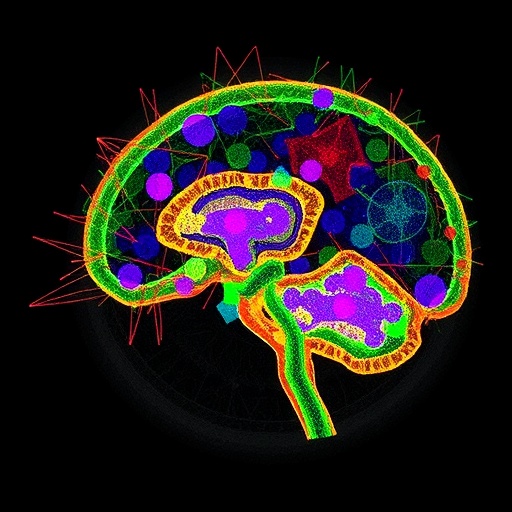In recent years, the healthcare sector has increasingly recognized the critical importance of patient safety culture. It is no longer merely a buzzword but a foundational element that can significantly influence the dynamics between healthcare professionals, particularly nurses, and their responsibilities towards patient care. A recent study conducted by Sadeghi, Naderi, and Yusefi has delved deeper into this intertwined relationship. By employing structural equation modeling, the study uncovers how perceptions of patient safety culture directly impact nurses’ accountability and engagement in their duties.
The notion of patient safety culture encompasses the shared beliefs, practices, and attitudes within healthcare settings, which shape the behavior and performance of healthcare staff. A robust safety culture has been shown to improve communication among team members, enhance reporting mechanisms for errors, and ultimately lead to better patient outcomes. This study aimed to quantify those effects through rigorous modeling, determining not just correlation but causation in the nurse-care environment.
Nurses often serve on the front lines of patient care, making their role integral to the quality and safety of healthcare services. If the prevailing culture within a healthcare facility promotes openness and safety, nurses are likely to feel empowered to take responsibility for patient care. Conversely, a toxic or punitive safety culture may cultivate fear and reluctance to admit mistakes, thereby placing patients at risk. This duality was the focal point of the research conducted by Sadeghi and colleagues.
Through the lens of structural equation modeling, the researchers analyzed data from a significant number of healthcare facilities. The intention was to illuminate the pathways through which a positive safety culture can enhance nurses’ responsibilities. By demonstrating how specific cultural constructs influence behavior, the study aims to guide healthcare organizations in fostering environments that prioritize safety and accountability.
The results revealed compelling insights. Notably, a strong alignment with safety principles was linked to increased levels of job satisfaction among nurses. When nurses feel that their environment is supportive and that their contributions toward patient safety are valued, their overall commitment to their roles grows. Consequentially, this leads to a more vigilant approach to patient care, as satisfied nurses are more likely to engage actively in safety practices.
Moreover, the research highlighted the importance of leadership in shaping safety culture. Effective leadership was identified as a critical factor that contributes to a positive working environment. It sets the tone for organizational culture, influencing how nurses perceive their responsibilities. Leadership styles that adopt a collaborative and communicative approach not only promote safety initiatives but also instill a sense of duty and responsibility among nurses.
Additionally, the implications of this study extend beyond mere satisfaction metrics. The quantitative assessment of the relationship between safety culture and nurse responsibility provides concrete evidence that can inform policy decisions within healthcare systems. Organizations aiming to enhance patient safety can use these insights to recalibrate their training programs, ensuring they emphasize the importance of a healthy safety culture.
Intriguingly, the research also examined the demographic variables that may mediate these relationships. Factors such as years of experience, type of nursing specialty, and geographical location all played a role in shaping perspectives on safety culture. This nuanced understanding validates the complexity of the healthcare ecosystem, suggesting that tailored approaches may be necessary to address specific challenges faced by diverse nursing populations.
As the study unfolds, it adds to an existing body of literature emphasizing the critical interplay between nurse engagement and patient safety culture. While previous research often concentrated on national assessments, this study’s localized approach allowed for a more granular understanding of factors at play within individual healthcare organizations. The intention is to shift the focus from universal measures to more tailored, organization-specific strategies.
Furthermore, this research was timely, considering the rising emphasis on accountability in healthcare due to recent global health crises. The COVID-19 pandemic has amplified the scrutiny on healthcare institutions, underscoring the urgency for improvement in patient safety practices. The findings are not only relevant for current practices; they provide a framework for future training and professional development initiatives for nurses.
In conclusion, the work of Sadeghi, Naderi, and Yusefi is a significant contribution to the discourse on patient safety. It accentuates the need for ongoing research into how safety culture can be effectively cultivated within healthcare systems. Empowering nurses through recognition of their essential role in patient care is paramount, and this study unequivocally supports that mandate.
The findings of this research should serve as a wake-up call for healthcare organizations. It is no longer sufficient to merely recognize the need for a strong safety culture; organizations must actively foster it. Nurses must feel supported and affirmed in their responsibilities to ensure the highest standard of patient care. The structural equation modeling approach presents a valuable toolkit for examining these interrelations, setting the stage for ongoing dialogue and innovation in the field.
In a sector that continually faces challenges and evolving dynamics, cultivating a proactive patient safety culture is vital. The implications of this study are profound, offering a roadmap for healthcare institutions dedicated to enhancing patient safety and ensuring the wellbeing of both nurses and patients alike. Time will reveal how these insights influence future standards and practices in healthcare, but the path forward is illuminated by the essential findings of this groundbreaking research.
Subject of Research: Patient safety culture and its influence on nurses’ responsibility.
Article Title: How patient safety culture influences nurses’ responsibility: a structural equation modeling study.
Article References: Sadeghi, R., Naderi, Z. & Yusefi, A.R. How patient safety culture influences nurses’ responsibility: a structural equation modeling study. BMC Nurs 24, 1414 (2025). https://doi.org/10.1186/s12912-025-04072-y
Image Credits: AI Generated
DOI: https://doi.org/10.1186/s12912-025-04072-y
Keywords: Patient safety, nursing responsibility, safety culture, structural equation modeling, healthcare organizations.
Tags: beliefs and practices in nursingdynamics of healthcare environmentsempowerment of nurses in patient carefostering a positive safety culture in nursinghealthcare professionals communicationimpact of safety culture on nursingimproving patient outcomes through safety culturenurses’ accountability in healthcarepatient care responsibilitiespatient safety culturereporting mechanisms for healthcare errorsstructural equation modeling in healthcare





